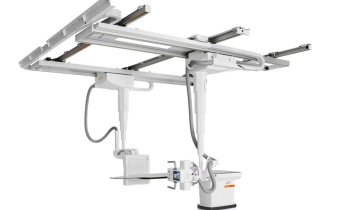The 27th Annual EAU Congress
Urologists from 80 countries met in Paris to hone up on new urology techniques. Jane MacDougall reports.
Around for almost 20 years, minimally invasive technologies such as laparoscopy and robot-assisted surgery are popular subjects – and aired again during the 27th EAU Congress held in February at the Palais des Congrès, Paris.


Some experts, including Professor Clement-Claude Abbou, (Creteil, France) believe that robots have been developed without recourse to EBM (evidence-based medicine) and, to prevent surgeons becoming “the slave of any current or new robot” they need to be validated by medical professional groups in the same way as new drugs. During an EAU session, he also warned against creating unnecessarily high expectations in patients when describing results from robot-assisted surgery.
Nevertheless the da Vinci Si Surgical System booth attracted the crowds. Urologists keen to practise their operating technique used the Skills Simulator the ‘immersive virtual environment created for the system. Designed to integrate with an existing Da Vinci console, this portable component covers a variety of exercises that enable evaluation of surgical performance over a range of skill categories needed for the correct utilisation of the Surgical System. These are relevant to surgeons of all disciplines. Such a system allows residents to gain valuable practice time and experienced surgeons to warm-up and be completely familiar with the robot’s console before performing an operation. As Dr Axel Bex (Amsterdam, NL) said during his presentation on combination therapy for high risk and metastatic renal cell carcinoma ‘outcomes depend very much on the skills of the individual surgeon’.
Novelty in imaging is offered by the Lithoskop multifunctional lithotripter from Siemens, marketed with the promise ‘discover the future of urology today’. Developed for virtually all urological applications, any urological operation can be carried out on this single system without patient repositioning, thereby combining optimising workflow with patient comfort. Ideal for treating kidney and upper ureteral stones, the system also provides excellent X-ray and endoscopy capacity and features state-of-theart ultrasound with comprehensive 2-D and 3-D imaging capabilities. High imaging quality also decreases imaging time, thus minimising radiation exposure.
Imaging on a much smaller scale is provided by the CUBEscan hand-held Bladder Scanner a 3-D ultrasound device from Korea. The BioCon-700 measures urine volume in a patient’s bladder, determines the bladder’s outline and calculates bladder volume. A pre-scan function shows a live ultrasound image of a horizontal planar cross-section of the bladder helping to locate it and improve accuracy. Designed to diagnose urinary retention and evaluate many common urological conditions the device helps prevent unnecessary catheterisation and reduce urinary tract infections.
Carers may also use it to monitor and treat incontinence. For prostate cancer the new Advanced Medical Diagnostics Prostate HistoScanning is an ultrasound-based tissue characterisation technique shown to detect clinically significant prostate cancer in several clinical trials. The application uses tissue characterisation algorithms to visualise and position the extent of differentiated tissue suspected to be malignant. Used in routine clinical screening, the system allows a complete examination of the prostate, giving high quality 3-D images that allow the localisation and volume of suspect tissue to be determined.
Clinically validated by comparison with histology in patients undergoing radical prostatectomy, sensitivity and specificity have been shown to be greater than those of MRI. HistoScanning can help physicians with treatment selection, planning and in the follow-up of patients best served by active surveillance. New applications for breast, ovary and thyroid cancer are in development.
####
Details: www.intuitivesurgical.com; www.medical.siemens.com, www.mcubetach.co.kr;
www.histoscanning.com.
30.04.2012











